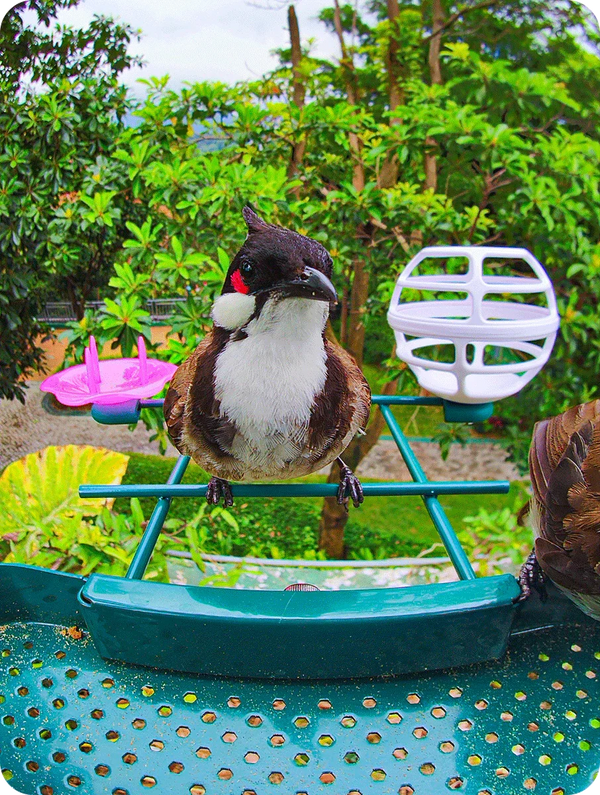Unlock the Secrets to Attracting Birds: The Ultimate Guide to Choosing the Perfect Feeder!
Bird feeders are a magical gateway to the vibrant world of birdwatching. They not only provide a source of food for our feathered friends but also create a sanctuary in our backyards where we can observe their beauty and behavior up close. Imagine sipping your morning coffee while a colorful finch flits to your feeder, or watching a woodpecker skillfully peck at a suet block. The joy of birdwatching is enhanced significantly with the right bird feeder, as it attracts a diverse range of species, turning your outdoor space into a lively hub of activity. Whether you are a seasoned bird enthusiast or a curious beginner, understanding the role of bird feeders in supporting local bird populations is essential for creating an inviting environment for these charming creatures.

Understanding Bird Feeders
At their core, bird feeders are designed to provide sustenance to birds, especially during times when natural food sources are scarce. They come in various shapes and sizes, each catering to different bird species and feeding habits. By installing a bird feeder, you are not only contributing to the health and survival of local avian populations but also creating an opportunity for learning and enjoyment in your own backyard. Bird feeders can serve as a focal point for observation, bringing families and friends together as they marvel at the incredible diversity of birds that visit. From the cheerful chirps of sparrows to the striking colors of cardinals, each visit offers a new experience and a chance to connect with nature.
Types of Bird Feeders
When it comes to bird feeders, the variety can be overwhelming. However, understanding the different types can make your selection process much simpler. Here are the most common types of bird feeders you'll encounter:
Platform Feeders
Platform feeders are flat, open surfaces that allow multiple birds to feed simultaneously. They are ideal for attracting ground-feeding species such as doves, jays, and sparrows. One of the advantages of platform feeders is their versatility; you can offer a wide range of food types, including seeds, fruits, and even nuts. A friend of mine has a platform feeder in her backyard, and she loves watching the various birds that come to visit, especially during the spring when migratory birds return.
Tube Feeders
Tube feeders are cylindrical in shape and typically have multiple feeding ports. They are designed primarily for small songbirds like finches and chickadees, as the feeding holes are too narrow for larger birds. These feeders usually come with a clear plastic tube that allows you to monitor seed levels easily. A neighbor of mine installed a tube feeder filled with nyjer seeds, and the goldfinches flocked to it, creating a delightful spectacle.
Suet Feeders
Suet feeders are specifically designed to hold suet cakes, which are a high-energy food source made from animal fat, often mixed with seeds, fruits, or insects. These feeders are particularly important during winter months when birds require extra calories to maintain their energy levels. Woodpeckers, nuthatches, and even some warblers are attracted to suet feeders. I remember my first winter with a suet feeder; the woodpeckers were a constant source of entertainment as they clung to the feeder, pecking away enthusiastically.
Hummingbird Feeders
Hummingbird feeders are designed specifically for these tiny, fast-flying birds. They typically feature bright colors and feeding ports that mimic flower shapes, attracting hummingbirds with the promise of nectar. It's essential to keep the nectar fresh by changing it regularly and cleaning the feeder to prevent mold. A little tip from a friend who has successfully attracted hummingbirds is to place the feeder near flowering plants, as this can enhance your chances of attracting them.
Choosing the Right Feeder
When selecting a bird feeder, consider the types of birds you wish to attract based on your location. Research local bird species and their feeding preferences to make an informed decision. Additionally, think about the aesthetics of the feeder—choose one that complements your outdoor décor. If you have limited space, a window feeder can be a fantastic option for observing birds up close without taking up much area. The location of your feeder is also crucial; it should be placed in a safe spot away from predators, while still being visible for birdwatching. Lastly, consider your maintenance routine. Some feeders require more upkeep than others, so choose one that fits your lifestyle.
Maintaining Your Bird Feeder
Regularly clean your bird feeder to ensure it stays functional and safe for visiting birds. Use a mild soap solution to thoroughly rinse the feeder and let it dry before refilling. This routine not only enhances your birdwatching experience but also protects the health of the birds by preventing diseases. Dispose of any spoiled food, and prevent pests such as ants and squirrels from invading your feeder. Maintaining your bird feeder is vital for keeping it peak condition and ensuring the health of visiting birds.
Creating a Bird-Friendly Environment
In conclusion, bird feeders are an essential tool for attracting and supporting a variety of bird species, enriching our outdoor spaces and providing endless opportunities for enjoyment. By understanding the different types of feeders, choosing the right one for your environment, and maintaining it properly, you can create a haven for birds right in your backyard. The joy of birdwatching is a rewarding experience, connecting us with nature and fostering a sense of tranquility. So, grab your feeder, fill it with seeds, and prepare to be captivated by the enchanting world of birds!








